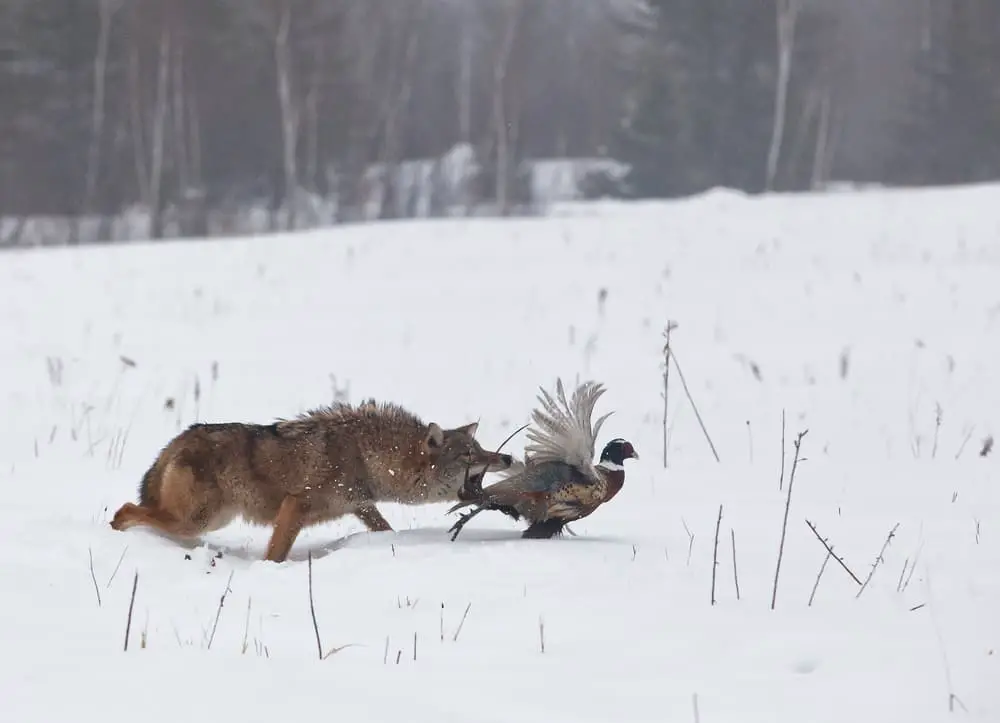
Coyotes are born survivors and will do and eat whatever they need to survive. The resilient adaptability of coyotes has made them exciting animals to research regarding their diets and hunting techniques.
Coyotes are omnivores who eat 90% meat and 10% plant-based foods. Coyotes are most active during dawn or dusk when they hunt alone or in pairs. Solitary coyotes primarily hunt small prey, but packs of coyotes will hunt and kill large prey animals. Coyotes can form hunting alliances with badgers.
Coyotes have spread throughout most of America and are one of the most common medium-sized predators living within city limits. The varied environments coyotes call home have forced them to develop unique hunting skills and meal plans.
Table of Contents
- Are Coyotes Omnivores or Carnivores?
- Do Coyotes Prefer Meat or Vegetables?
- What Game Do Wild Coyotes Hunt?
- Do Coyotes Eat Cats and Dogs?
- When Do Coyotes Hunt?
- Do Coyotes Hunt Alone or In Packs?
- The Symbiotic Relationship Between Coyotes And Badgers
- Coyotes Hunting Patterns And Prey Type
- Conclusion
Are Coyotes Omnivores or Carnivores?
Coyotes, like dogs and unlike wolves, are omnivores who eat both meat and plants. Approximately 90% of the coyote’s diet comprises freshly killed or scavenged animal meats, while the remaining 10% is made up of plant-based foods.
These plant-based foods are essential components of a Coyote’s diet. They allow the coyote to survive in desolate areas devoid of suitable prey, i.e., during harsh winters or desert environments.
Do Coyotes Prefer Meat or Vegetables?
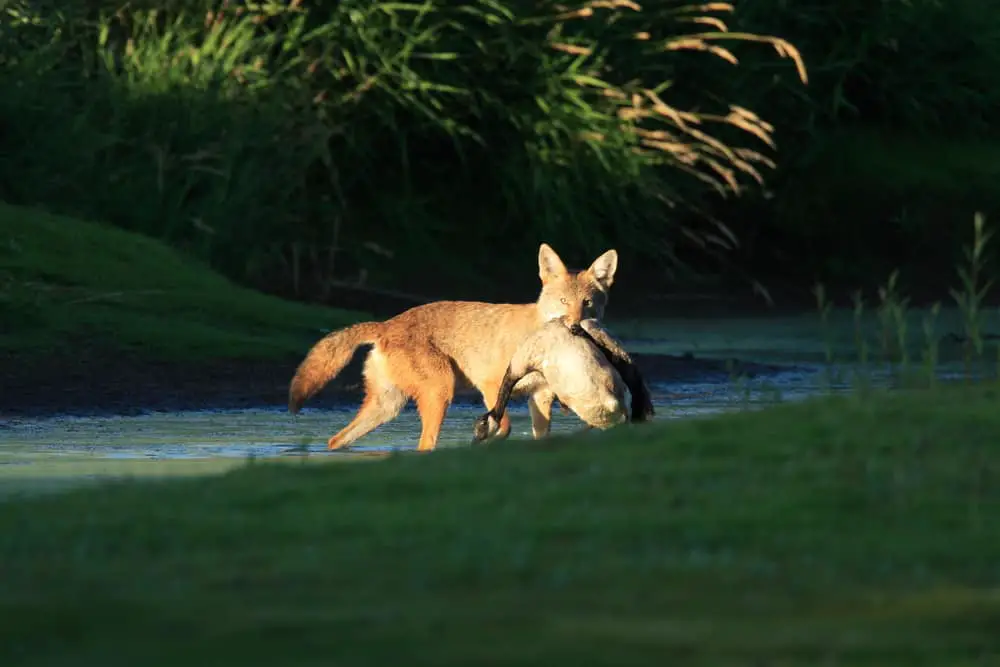
Coyotes typically prefer to eat meat-based meals and are not particularly fussy about what meat they’ll eat. Coyotes will hunt and kill fresh prey if available but have been known to eat roadkill, garbage, and rotting meat. The coyote’s motto is “food is food, and beggars can’t be choosers.”
During winter months, when the game becomes scarce, coyotes will begin to supplement their diets with berries, but they have been known to eat other fruit, grass, and even wheat. These plants provide valuable nutrients to the hungry coyote; however, these nutrients are more challenging for the coyote to access.
The sharp canines, and bite, tear and swallow action of eating coyotes are not conducive to breaking down plant matter. Nor are their digestive system efficient at metabolizing nutrients from the plant. Coyotes with a predominantly plant-based diet, as is expected at the end of winter, become lean and rangy due to a calory deficient diet.
What Game Do Wild Coyotes Hunt?
Coyotes primarily target small to medium-sized prey when hunting alone or in pairs. Coyotes are not much bigger than medium-sized dogs and thus tend to avoid big game unless the coyote has packmates who can assist in the hunt!
Coyotes believe variety is the spice of life and will happily hunt birds, fish, rabbits, squirrels, and other small rodents. Coyotes have been known to snatch fish out of shallow waters and grab low flying birds.
Young coyote pups, ready to leave the den, will begin hunting their supper by practicing their stalking and pouncing techniques on unsuspecting locusts, crickets, cockroaches, and other large insects.
Do Coyotes Eat Cats and Dogs?
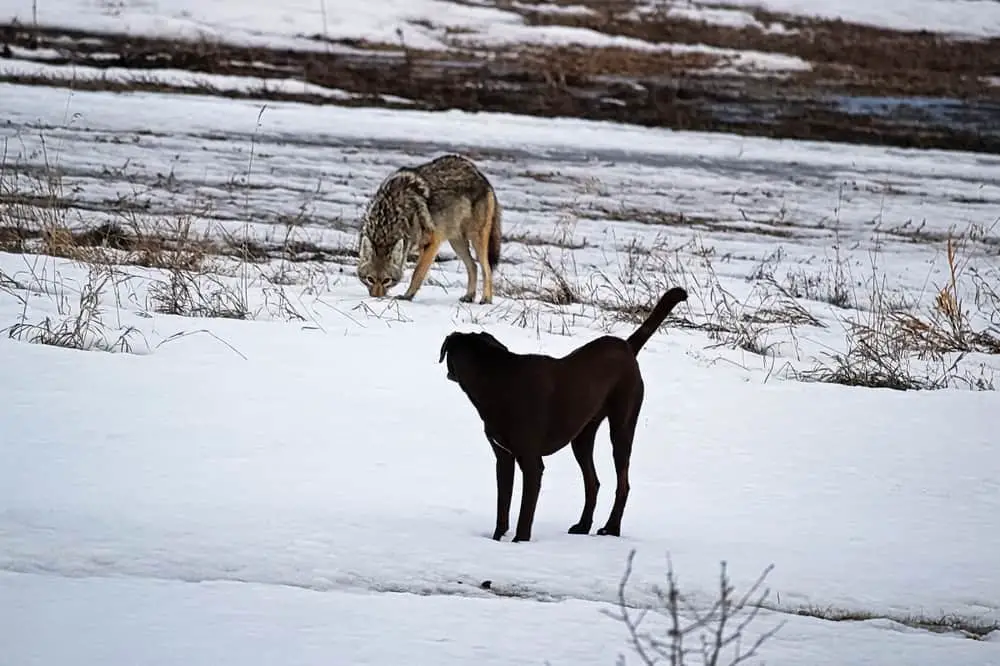
Coyotes have been known to supplement their diets with cats and small dogs, especially if they are unattended and vulnerable, e.g., old, injured, or young.
Many owners have developed a vigilante-type vendetta against coyotes for the threat they pose to their beloved pets. However, the Urban Coyote Research project has found that the blame for lost and injured pets may be disproportionately assigned to urban coyotes.
Conducted over six years, researchers used post-mortem evaluations, scat analysis, and visual observation to determine what makes up an urban coyote’s diet. These scientists discovered that most urban coyotes survive primarily on small rodents, roadkill, and plants scavenged within the city limits, NOT pets and human garbage.
So, while coyotes do pose a threat to your pets’ safety, the danger may not be as imminent as many pet owners believe. A few basic and easy-to-follow precautions will ensure a peaceful cohabitation between domestic pets, humans, and coyotes.
When Do Coyotes Hunt?
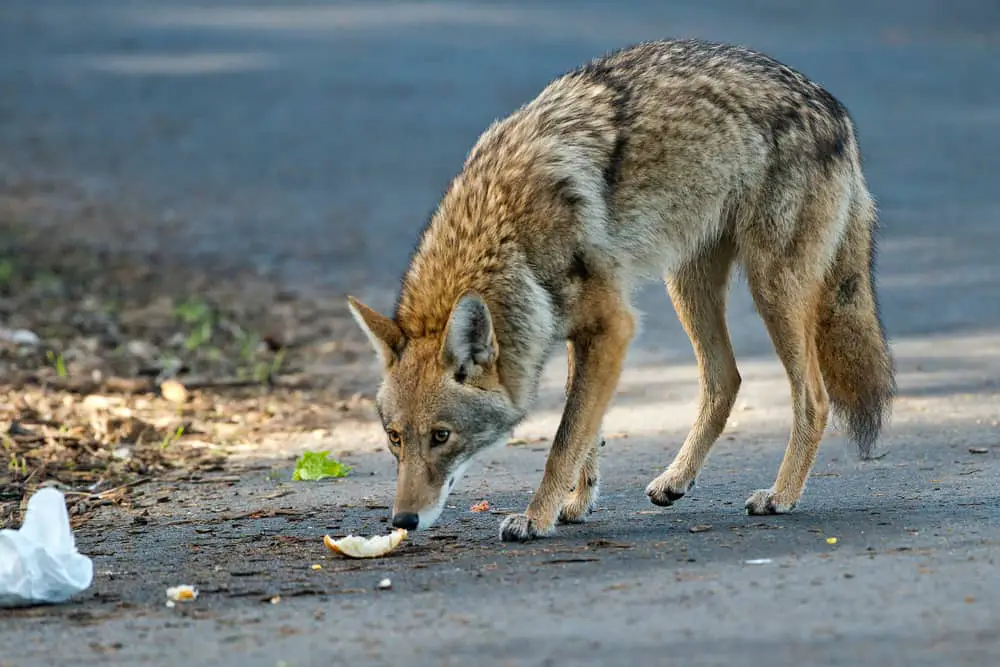
Coyotes in the wild are crepuscular hunters preferring to hunt in the twilight hours of dawn and dusk, although they may still make kills during the night hours if they were unsuccessful during their dusk forays.
While primarily nocturnal and crepuscular, wild coyotes have been known to hunt during the day if they need additional food.
Urban coyotes are known as “The Ghosts of the City” for a good reason. Coyotes living in the city know that their best bet for survival is to remain undetected by their human neighbors. These coyotes are almost exclusively nocturnal but may extend their hunting hours into
the early dawn hours.
Do Coyotes Hunt Alone or In Packs?
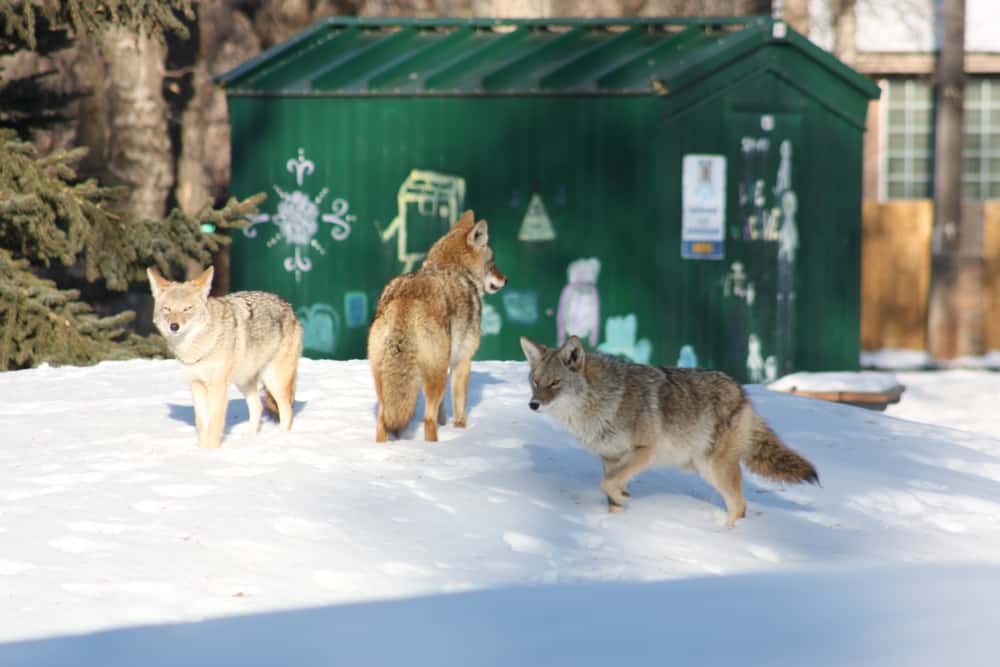
As close relatives of wolves and dogs, most people assume that coyotes also hunt in packs. Although coyotes form loose family packs, their pack bonds are not as strong as those seen in wolves, wild dogs, and other canid species.
Unlike these pack bonded animals, many coyotes prefer to engage in solitary hunts. Mated pairs or related coyotes may hunt together in a loose hunting alliance.
Lone coyotes and coyote pairs will primarily scavenge for food or target small prey. Solitary coyotes fiercely defend their kill and won’t share their meal with other coyotes, even pack mates.
Family groups of coyotes have been known to hunt in packs, especially when targeting large prey like white-tailed deer. Kills made by a pack of coyotes are shared amongst all animals involved in taking down the game.
The Symbiotic Relationship Between Coyotes And Badgers
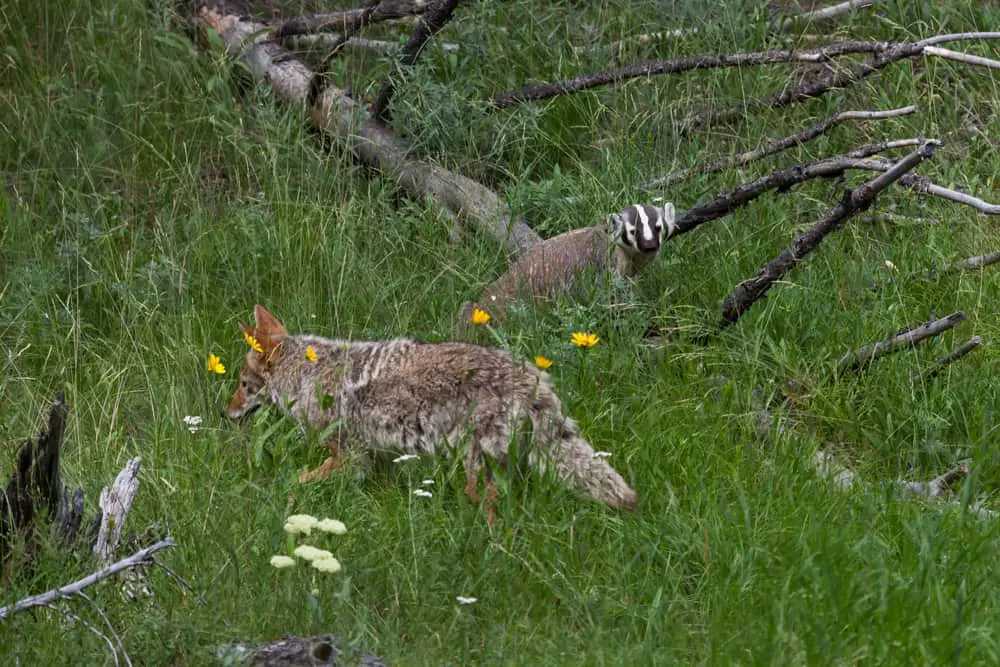
Coyotes and badgers frequently form short-term alliances as they engage in cooperative hunting. These unlikely hunting buddies have skill sets that complement each other, making them a formidably lethal hunting pair.
The badger is not the fastest land animal and frequently loses its prey when pursuing them over long distances, but the ponderous badger is a brilliant digger.
By contrast, the coyote is a fast runner and easily outdistances most prey animals allowing it to take down fleeing prey. However, the coyote is a mediocre digger and will generally lose prey that goes underground.
The badger and coyote work together to capitalize on their strengths while covering their weaknesses. The badger will dig up and flush out underground animals for the coyote to chase and catch. The coyote and badger are 30% more successful when hunting together than when hunting alone!
Coyotes Hunting Patterns And Prey Type
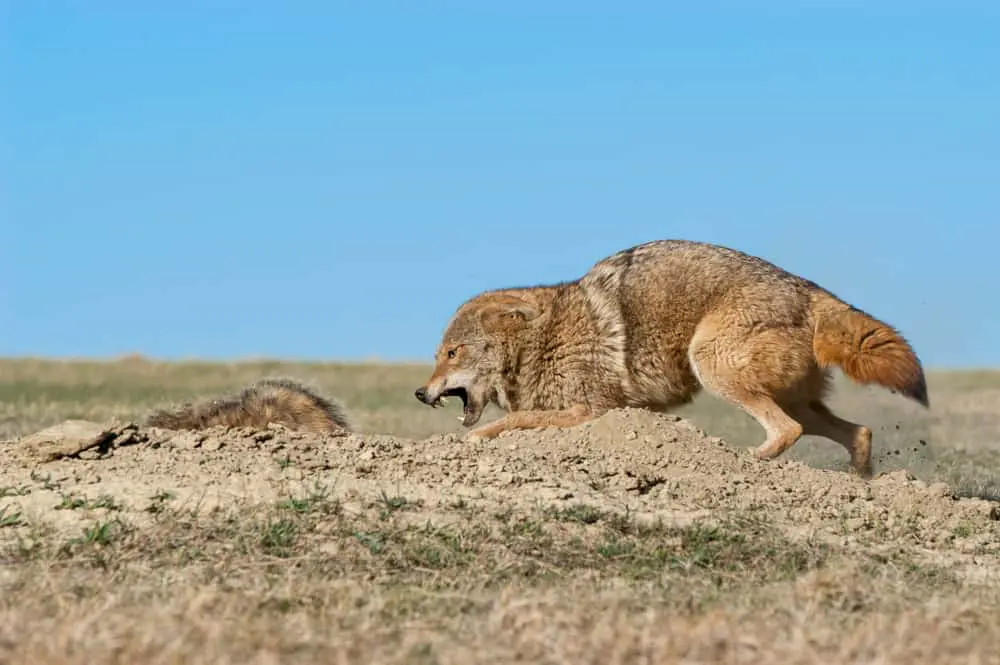
Coyotes have adapted their hunting techniques to take down large prey without unduly endangering the pack. Coyotes hunting in a group will take turns chasing the deer or other large animals. This tag-team effort allows the coyotes to conserve their energy while tiring out their desperate prey.
Alternatively, some coyote packs have perfected the “ambush” kill. Two or three of the coyotes will lie in wait as their pack mates drive the fearful animal into the path of the waiting coyotes. The trap is sprung as deer or other prey animals are surrounded with no hope for escape.
Coyotes on mousing expeditions show distinct hunt-and-pounce behavior reminiscent of many fox hunting strategies. The coyote will slowly walk through the long grass, keeping its eyes, ears, and nose peeled for any sign of mice, voles, or other small rodents. Once spotted, the coyote’s legs go stiff, and it does a vertical, up-down jump onto the creature.
Conclusion
Coyotes are omnivores who primarily eat meat but also eat fruit, vegetables, and other plant-based material during lean times of the year. Most coyotes prefer to hunt alone or in pairs but have been known to hunt in packs or even form hunting alliances with other animals like badgers.
Sources:
Live Science: Coyotes
Animal Diversity: Canis Latrans
Broomfield: Coyote Conflict Brochure
Urban Coyote Research: What do Urban Coyotes Eat
Urban Coyote Research: How to Avoid Conflicts with Coyotes
Smithsonian Magazine: Watch a Coyote and Badger Hunt Together



